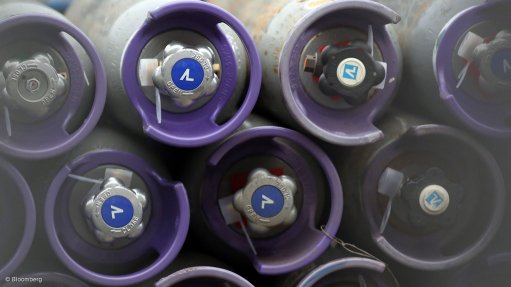The geopolitics of energy transition: The five things we must do now
This article has been supplied as a media statement and is not written by Creamer Media. It may be available only for a limited time on this website.
Fundamental changes are taking place in the global energy security that will have significant geopolitical implications. The geopolitical balance will shift, and the relationships between countries will also be transformed. Eventually, the world that will emerge from the renewable energy transition will be very different from the one built on a foundation of fossil fuels.
Today, climate change is the biggest challenge facing humankind now. And we have reached a tipping point: The Earth’s atmosphere is warming faster than ever before. The Intergovernmental Panel on Climate Change has raised the warning that the average global temperature could increase by more than 1.5 degrees before 2030. We are heading towards 3.5 degrees if we don’t act now. The energy sector holds the key to averting a climate disaster.
As a result, the weighting of fossil fuels and renewable energies is shifting. To put it simply: our world order has been based on oil. That is gradually changing. We are moving to a world where electrons will be more important than carbon in the overall energy supply chain. The use of electricity is already surging. It provides about 20 percent of energy today and will have to rise to 50 percent by 2050 if countries are to meet their climate commitments.
Geopolitical consequences: Countries leading the energy transition race
The new energy world will have a powerful impact on the world’s largest oil-and-gas-producing countries. According to a Bloomberg study, the ten countries currently most dependent on oil exports are in geographic regions with the highest risk of political instability.
There will be three ways for countries to exert influence in the new system. One is by exporting electricity or green fuels. Countries with an abundance of low-cost renewable power could become producers of green Hydrogen. Another is by controlling the raw materials used for clean energy technologies, such as lithium and cobalt. The third is by gaining an edge in technologies such as electric vehicle batteries.
The “winners” of the change will be countries that can to produce large volumes of low-cost green energy, including the Middle East, Africa or the United States, and Latin America. With the costs of renewable energy falling, the emerging geopolitical map is likely to show growing regionalization in energy relations. Renewables can be deployed in every country. Thus, states can transport renewable electricity to neighboring countries via transmission lines. This new landscape gives rise to a whole new constellation of markets and bilateral trade relationships. We will see a new class of energy exporters that may emerge.
A new energy economy is emerging
Properly designed and implemented, the energy transition will ease progress towards all 17 Sustainable Development Goals. It will enhance energy independence for most countries, and thus the number of energy-related conflicts is likely to fall. It will also promote prosperity and job creation and improve sustainability and equity.
But we have to understand the energy transition is an incredibly complex issue. A rapid shift away from fossil fuels could create a financial shock. The energy transition is taking place at different speeds around the world. Each country has its own starting point. And no “ONE” technology that will make the energy transition a success, or “no silver bullet,” as I like to say.
- Thinking and “acting” globally: Climate change is a global problem. Temperatures will not stop rising in Munich or Paris if emissions do not fall in New Delhi or Iraq. That’s why governments around the globe need to develop common goals, share knowledge, and ensure that innovative technologies developed in one country are quickly transferred to others. The U.N. climate summit in Glasgow was an important milestone in this regard, even though it resulted in several compromises that hardly went beyond steps already taken. But they can and must now be followed up in concrete terms. The G7 Climate Club planned by the German government is an essential step in this direction.
- Driving and scaling up climate innovations: Part of global emissions can be reduced by existing technologies. That is why we need to continue to expand renewable energy massively while switching from coal to gas as quickly as possible. Expanding power grids is also an essential piece of the puzzle we need to look into, as well as increasing efficiency and electrification in hard-to-abate sectors. We also need to scale up disruptive technologies, which we need to get to net-zero. These include solutions for energy efficiency, hydrogen-based fuels, carbon capture, and storage. Here, the public sector can, in addition, leverage its procurement power to drive demand. We need to provide incentives to inventors to develop competitive carbon-free alternatives and for consumers to buy them.
- Unleashing the financial power: Around €50 trillion will be needed by 2050 to shift the global economy to net-zero emissions. Seventy percent of the additional spending required will be needed in developing countries. Thus, we need to find creative ways to finance climate technologies and projects, ones that bring together public and private capital. Rapid and targeted government support is critical. It should focus on long-term incentives and programs, rewarding those who introduce innovations early. At the same time, they should fund energy transition projects in low-income countries.
- Assuming greater corporate responsibility: Companies need to declare sustainability as a fundamental principle of their actions. Governments can achieve their climate targets only if companies shrink their own carbon footprint and include their supply chains in the process. That is why clear targets and concrete implementation plans should help determine a company’s share value in the future.
- Cross-sector cooperation is a key: Today, more than ever before, we must work together to find solutions. Technology is not the issue in energy security. There is now significantly more money for basic research and development. We need to ensure we have the right setup to avoid duplication and make the best use of resources. That is why we should create alliances or networks for innovation. Creating an enabling ecosystem of expertise and resources can help bring down the cost of climate technologies.
Despite challenges, energy security will ultimately move the world in the right direction. It will make most countries energy-independent. It will provide emerging markets with the resources they need to develop their economies – all while keeping global temperatures from rising more than 2 degrees. How fast and how ‘equitably’ the energy transition happens is the biggest challenge of our time, which is all more reason to start acting now.
Comments
Press Office
Announcements
What's On
Subscribe to improve your user experience...
Option 1 (equivalent of R125 a month):
Receive a weekly copy of Creamer Media's Engineering News & Mining Weekly magazine
(print copy for those in South Africa and e-magazine for those outside of South Africa)
Receive daily email newsletters
Access to full search results
Access archive of magazine back copies
Access to Projects in Progress
Access to ONE Research Report of your choice in PDF format
Option 2 (equivalent of R375 a month):
All benefits from Option 1
PLUS
Access to Creamer Media's Research Channel Africa for ALL Research Reports, in PDF format, on various industrial and mining sectors
including Electricity; Water; Energy Transition; Hydrogen; Roads, Rail and Ports; Coal; Gold; Platinum; Battery Metals; etc.
Already a subscriber?
Forgotten your password?
Receive weekly copy of Creamer Media's Engineering News & Mining Weekly magazine (print copy for those in South Africa and e-magazine for those outside of South Africa)
➕
Recieve daily email newsletters
➕
Access to full search results
➕
Access archive of magazine back copies
➕
Access to Projects in Progress
➕
Access to ONE Research Report of your choice in PDF format
RESEARCH CHANNEL AFRICA
R4500 (equivalent of R375 a month)
SUBSCRIBEAll benefits from Option 1
➕
Access to Creamer Media's Research Channel Africa for ALL Research Reports on various industrial and mining sectors, in PDF format, including on:
Electricity
➕
Water
➕
Energy Transition
➕
Hydrogen
➕
Roads, Rail and Ports
➕
Coal
➕
Gold
➕
Platinum
➕
Battery Metals
➕
etc.
Receive all benefits from Option 1 or Option 2 delivered to numerous people at your company
➕
Multiple User names and Passwords for simultaneous log-ins
➕
Intranet integration access to all in your organisation





















